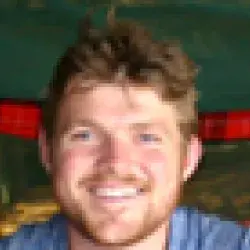Counting Lions in Samburu
I crawled out of my tent at quarter to six. The sky was a dull grey-blue, with a few stars left scattered around the crescent moon. Shivani had already started Gypsy's engine, warming up the little white Suzuki. Joseph, the camp chef and general manager, trotted over with a thermos of hot chai and some bananas for breakfast. Lekuraiyo emerged from his tent wrapped in his red shuka and greeted us. We climbed into Gypsy and pulled out of camp to go find some lions.
Shivani Bhalla is conducting lion research in Samburu district of Kenya, and is an AWF Charlotte Fellow. Her project, Ewaso Lions, is censusing lions in Samburu National Reserve and the surrounding community areas. She set up a small camp in West Gate Conservancy, an area with an unknown lion population and ongoing conflict between these lions and people.
This morning we headed to the Conservation Area in West Gate - a place set aside by the community as a no-livestock zone for wildlife. With Lekuraiyo's keen eyes looking out of the car's hatch, it wasn't long before we found three sets of lion tracks. "It looks like a male and two females," Shivani said excitedly.
She's been in the area for a bit over a month and hasn't yet seen a lion. "The lions in these parts are completely different than the lions in the reserve. The reserve lions are so used to people and vehicles that they're almost tame. The ones in these parts are truly wild." Even the managers of the nearby Sasaab lodge have been here a year and have never seen a lion. I'm only here for a few days - what are my chances?
Shivani will radio-collar a lion (like this collared male I photographed in Samburu National Reserve).
We came to an area with thick salvadora bushes - perfect lion hideouts. We decided to wait. We turned off the engine and listened for tell-tale signs of lions: baboon alarm calls, dik dik whistles, or nervous guinnea fowl squawking. For about half an hour we sat in silence, tensely.
There was a sudden movement in the bush and Lekuraiyo whispered "Simba!" and we turned to follow his gaze. A large lioness had emerged from behind a bush, frozen mid-step, and was staring directly at us. No one moved. The lioness' head was low, eyes focused, legs set for flight. She looked big and healthy, her muscles visible under her tan coat.
Just as quickly as she had appeared, she disappeared off into the bushes. We collectively sighed and sank back into our seats as if the 8 seconds were utterly exhausting.
"That's a real lion," Shivani said. It was her (and my) first sighting of a wild lion outside a protected area. It was an important moment. With luck, Shivani will continue to locate lions in the area, and radio-collar one in August to track the population. By counting lions in the area it will paint a better picture about these declining predators.

